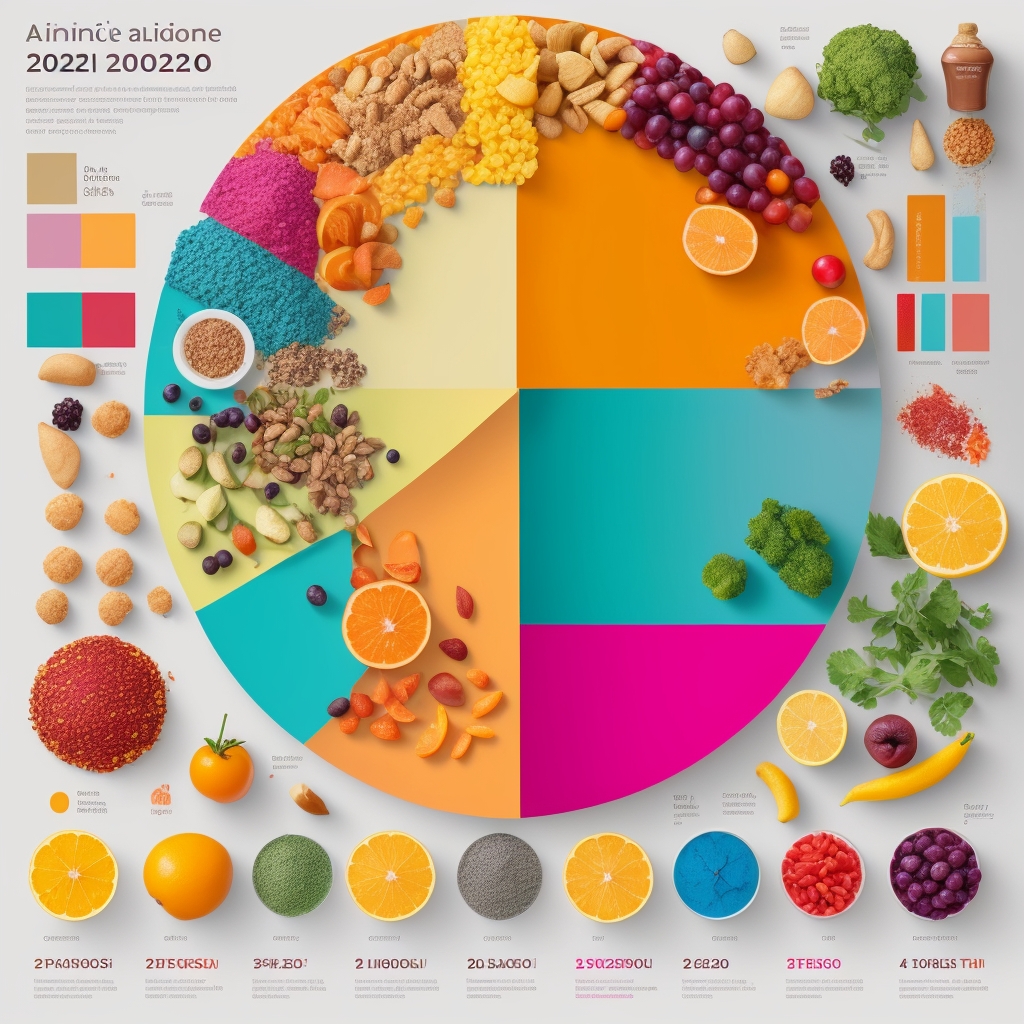As we head deeper into 2025, it’s clear that budget management remains a significant challenge for many households, especially when it comes to grocery spending. With the persistent rise in the cost of living, it’s becoming absolutely imperative to find smarter ways to optimize these expenses without compromising the quality of the products we consume daily. After all, nobody wants to sacrifice good, nutritious food just to save a few bucks. This article isn’t just a guide; it’s your blueprint to genuinely reduce your food costs while maintaining a healthy and delicious diet.
The reality is that grocery prices have continued their upward trajectory throughout 2024 and into 2025, with many staple items experiencing price increases that outpace wage growth. However, this challenging economic landscape has also sparked innovation in how savvy consumers approach their food purchasing decisions. From advanced meal planning applications to sophisticated price comparison algorithms, the tools available to today’s budget-conscious shoppers are more powerful than ever before.
What makes this moment particularly interesting is that we’re witnessing a convergence of traditional money-saving wisdom with cutting-edge technology. The grandmother who always clipped coupons and planned meals around sales would recognize many of these strategies, but she’d be amazed at how smartphone apps can now automate much of the legwork. This fusion of old-school frugality with modern convenience creates unprecedented opportunities for households to dramatically reduce their grocery expenses without making painful sacrifices.
Smart Strategies to Slash Your Food Bill
The Power of Meal Planning
Meal planning isn’t just a trend; it’s a scientifically proven technique for saving both money and precious time. By planning your meals in advance, you inherently buy only what you need, thereby dramatically reducing food waste. What’s interesting is that research consistently links meal planning to a more diverse, higher-quality diet, and even lower odds of obesity.
The psychology behind meal planning is fascinating. When you walk into a grocery store without a plan, you’re essentially gambling with your budget. Studies from behavioral economics show that hungry shoppers spend approximately 64% more than those who shop after eating. But meal planning goes beyond just avoiding hunger-induced purchases—it creates a systematic approach that transforms grocery shopping from an emotional experience into a strategic one.
-
Develop a weekly menu: Take a little time each week, perhaps over a cup of coffee, to plan your meals. A truly effective plan considers ingredients you already have at home, which is a fantastic way to use up what you’ve got before it goes bad. Professional chefs often recommend the “inventory first” approach—literally opening your pantry, refrigerator, and freezer before planning any meals. This method alone can reduce grocery spending by 15-20% for most households.
-
Optimize your grocery list: This is crucial. Create a detailed shopping list based only on your menu to avoid those tempting impulse purchases. We’ve all been there, right? Those mobile apps can be absolute game-changers for managing this list efficiently, keeping you honest in the aisles. The most effective grocery lists are organized by store layout, which reduces shopping time and minimizes exposure to impulse-buy zones that retailers strategically place throughout their stores.
Advanced meal planners also employ what nutritionists call “ingredient overlap”—choosing recipes that share common ingredients to maximize purchasing power. For example, if you buy fresh cilantro for tacos on Tuesday, plan a curry for Thursday that also uses cilantro, ensuring nothing goes to waste.
Smart Shopping: Bulk and Local Buys
Buying in bulk and consciously choosing local products can surprisingly reduce your grocery expenses more than you might think. However, the key is understanding which items truly benefit from bulk purchasing and which local options provide genuine value.
-
Bulk buying and savings: Bulk products are often considerably cheaper than their pre-packaged counterparts. Think about staples like grains, legumes, and spices. Just be mindful not to overbuy if you can’t use it all. Remember, Consumer Reports even suggests that freezing what you buy in bulk can be a key to maximizing savings. The mathematics of bulk buying can be compelling—rice purchased in 25-pound bags typically costs 40-60% less per pound than smaller packages, and the savings compound over time.
However, successful bulk buying requires storage solutions and consumption planning. Invest in airtight containers to maintain freshness, and consider splitting bulk purchases with neighbors or family members if storage space is limited. Some of the best bulk buying candidates include oats, quinoa, dried beans, nuts, olive oil, and frozen vegetables.
-
Embrace seasonal produce: Buying seasonal fruits and vegetables isn’t just about freshness; it’s your ticket to getting high-quality produce at genuinely competitive prices. Plus, it just tastes better! Understanding seasonal cycles can lead to savings of 30-50% on produce. For instance, buying strawberries in June versus December can mean paying $2 per pound instead of $6 per pound, while getting superior flavor and nutritional content.
Smart seasonal shoppers also practice “preservation purchasing”—buying extra quantities of seasonal favorites when prices are lowest and preserving them through freezing, dehydrating, or canning for year-round enjoyment.
-
Support local farmers’ markets: Here’s the thing though: not only do you support local farmers by shopping at their markets, but you often get incredibly fresh, higher-quality products that haven’t traveled thousands of miles. It’s a win-win. Many farmers’ market vendors offer “seconds”—slightly imperfect produce that’s perfect for cooking and preserving at significantly reduced prices.
The end-of-market strategy can yield exceptional deals, as vendors often prefer to sell remaining inventory at reduced prices rather than transport it back to their farms. Building relationships with regular vendors can also lead to advance notice of special deals or bulk pricing opportunities.
Culinary Craft: Home Cooking and Preservation
Cooking at home is not only more economical but, quite frankly, almost always healthier. It’s where you truly control what goes into your body. The financial impact of home cooking extends far beyond the obvious savings from avoiding restaurant markups.
-
Homemade meals for the win: Preparing your meals at home gives you full control over ingredients, portion sizes, and ultimately, your budget. A recent study highlighted that individuals who frequently cook at home tend to have healthier eating practices. The average restaurant meal costs 3-5 times more than preparing the same dish at home, but the savings go deeper than that initial comparison suggests.
Home cooking allows for strategic use of leftovers, transformation of ingredients across multiple meals, and precise portion control that reduces waste. Professional meal prep techniques, such as batch cooking grains and proteins, can reduce daily cooking time while maximizing ingredient utilization. Consider dedicating Sunday afternoons to preparing base ingredients that can be quickly assembled into different meals throughout the week.
-
Master preservation techniques: Learning how to properly preserve your food is like unlocking a superpower against waste. Extend shelf life and prevent spoilage by understanding techniques like freezing, drying, or canning. Your freezer, in particular, is an invaluable ally for leftovers or for stashing away seasonal produce when it’s at its peak price and freshness. Consumer Reports even suggests storing more expensive items like meat and eggs on the lower, colder shelves of your fridge for optimal preservation.
Modern preservation goes beyond traditional methods. Vacuum sealing can extend freezer life by 2-3 times, while proper blanching techniques maintain vegetable quality during freezing. Fermentation, an ancient preservation method experiencing a renaissance, can transform inexpensive vegetables into probiotic-rich foods that command premium prices in stores.
Leveraging Technology for Smarter Spending
In our digital age, it’s almost silly not to take advantage of technological advancements to manage your grocery budget. The sophistication of available tools has reached a point where technology can automate much of the tedious work involved in smart grocery shopping.
-
Budget management apps: These apps are fantastic for real-time tracking of your grocery spending, allowing you to instantly see where your money is going and adjust your budget accordingly. The best apps now integrate with bank accounts and credit cards to automatically categorize grocery purchases, providing detailed analytics about spending patterns over time.
Advanced features include price tracking for frequently purchased items, alerts when spending approaches budget limits, and predictive analytics that can forecast monthly grocery costs based on current purchasing patterns. Some apps even gamify the savings process, creating challenges and rewards for meeting budget goals.
-
Price comparison tools: Before you even leave the house, check multiple sources online to compare product prices and identify the best deals. It might take an extra minute, but the savings can be surprising. Modern price comparison has evolved beyond simple store-to-store comparisons to include dynamic pricing alerts, historical price data, and integration with store loyalty programs.
Sophisticated shoppers use apps that can scan barcodes to instantly compare prices across multiple retailers, factor in gas costs for shopping at different locations, and even predict future price trends based on seasonal patterns and market data.
Real-World Impact: Concrete Examples
Let’s imagine a hypothetical family of four, just like many across the country, currently spending around $800 per month on groceries. With food at home prices having risen by 2.2% over the last year (ending May 2025), optimizing spending is more critical than ever. By adopting the strategies we’ve discussed, this family could realistically reduce their spending by 20% to 30%, representing an annual savings of $1,920 to $2,880. What’s truly frustrating is that the average American family still throws out a staggering amount of edible food each year—some estimates put it around $1,500 to $3,000! Imagine those savings redirected!
To make this more concrete, let’s follow the Johnson family through their transformation. Before implementing these strategies, their typical grocery shopping involved multiple unplanned trips per week, frequent purchases of convenience foods, and significant food waste. Their monthly breakdown looked like this: $300 on meat and seafood, $150 on produce (much of which spoiled), $200 on packaged and processed foods, $100 on dairy and eggs, and $50 on pantry staples.
After six months of implementing strategic shopping practices, their spending pattern shifted dramatically. They now spend $220 on meat and seafood (buying in bulk and choosing less expensive cuts), $120 on produce (all seasonal and planned), $120 on packaged foods (mostly bulk items and store brands), $80 on dairy and eggs (buying larger quantities with longer shelf lives), and $40 on pantry staples (bulk purchasing of basics). Their total monthly spending dropped to $580, a savings of $220 per month or $2,640 annually.
Here’s how those strategies translate into tangible savings:
-
Meal planning: By consistently preparing a weekly menu, this family significantly reduces impulse buys and food waste. The planning process takes about 30 minutes each week but eliminates the daily “what’s for dinner?” stress while ensuring ingredients are used efficiently. Result: An estimated $70 saved per month.
-
Bulk buying: Purchasing pantry staples like grains and legumes in bulk, rather than smaller packages, adds up. They invested in proper storage containers and now buy rice, oats, beans, and spices in large quantities. The upfront investment in storage paid for itself within two months. Result: About $25 saved per month.
-
Local markets: Sourcing seasonal fruits and vegetables from their local farmers’ market ensures freshness and better prices. They’ve built relationships with three regular vendors who now alert them to special deals and seconds. Weekend market trips have become a family activity that saves money while supporting local agriculture. Result: $40 saved per month.
-
Home cooking: Consciously reducing meals out—which have seen a 3.8% price increase over the last year—and making more meals at home. They invested in quality cookware and now prepare restaurant-style meals at home for a fraction of the cost. Batch cooking on weekends provides convenient weekday meals without the premium of prepared foods. Result: A substantial $125 saved per month.
These seemingly small shifts in habit lead to genuinely significant financial relief while often improving the quality and nutritional value of meals consumed.
Advanced Strategies for Maximum Savings
The Art of Strategic Substitution
Learning to substitute expensive ingredients with more affordable alternatives without compromising flavor or nutrition can dramatically impact your grocery budget. Professional chefs regularly employ substitution strategies, not just for cost savings but for creativity and seasonal adaptation.
For protein, consider that dried beans and lentils provide complete nutrition at a fraction of the cost of meat. A pound of dried beans costs roughly $1-2 and provides the protein equivalent of $8-12 worth of meat. Ground turkey often costs 20-30% less than ground beef while providing similar versatility. Eggs remain one of the most cost-effective protein sources, providing high-quality complete protein for approximately $0.25 per serving.
In baking and cooking, expensive vanilla extract can be supplemented with homemade vanilla (vanilla beans soaked in vodka), which costs about 60% less and provides superior flavor. Expensive nuts can often be replaced with sunflower seeds or pumpkin seeds in recipes, providing similar texture and nutrition at significantly lower cost.
Mastering the Psychology of Grocery Shopping
Understanding the psychological tactics employed by grocery stores can help you maintain focus on your budget goals. Stores invest millions in research about consumer behavior, but awareness of these tactics can help you shop more strategically.
End-cap displays (products displayed at the end of aisles) aren’t necessarily sale items—they’re premium placement that manufacturers pay for. The most expensive items are typically placed at eye level, while better values are often found on higher or lower shelves. Shopping cart size influences spending—larger carts psychologically encourage larger purchases.
The most successful budget shoppers develop rituals that counteract these influences: shopping with a full stomach, using a basket instead of a cart when possible, shopping during off-peak hours when stores are less crowded and stressful, and taking a few deep breaths before entering the store to maintain focus on their planned purchases.
Key Takeaways and Expert Best Practices
-
Plan ahead religiously to avoid waste and those budget-busting impulse purchases. It’s your first line of defense. The most successful meal planners treat this as a non-negotiable weekly appointment with themselves, often combining it with other planning activities like reviewing the family calendar and checking weather forecasts.
-
Buy in bulk when sensible, and always prioritize local products to reduce costs and boost freshness. The key is developing storage systems and consumption patterns that support bulk purchasing without creating waste.
-
Cook at home as much as possible to maintain full control over the quality and cost of your meals. This is where the biggest gains are often made. Invest in quality basic equipment—a good knife, cutting board, and a few versatile pans—that makes home cooking more efficient and enjoyable.
-
Use technology—those apps and comparison tools—to track your spending and compare prices like a seasoned pro. However, don’t let technology replace common sense; use it to enhance your natural shopping instincts rather than complicate the process.
-
Build relationships with local vendors, butchers, and produce managers. These relationships often lead to advance notice of sales, special ordering opportunities, and access to products not available to general customers.
-
Understand seasonality not just for produce, but for all grocery categories. Baking supplies are cheapest before major holidays, grilling items are discounted at the end of summer, and many pantry staples follow predictable price cycles throughout the year.
FAQ: Your Burning Questions Answered
How can I really start planning my meals effectively?
Begin by assessing the ingredients you already have and create a weekly menu accordingly. Don’t overcomplicate it! Start with just a few days, then build up. Many expert chefs I know swear by starting with a “theme night” (e.g., Meatless Monday, Taco Tuesday) to simplify the process. Use meal planning apps to streamline and simplify the process; they can be surprisingly helpful.
The most effective approach is to start with one meal—perhaps dinner—and gradually expand to include breakfast and lunch. Keep a running list of family-favorite meals that you can rotate through, and don’t feel pressured to try new recipes every week. Consistency and simplicity often lead to better long-term success than ambitious plans that become overwhelming.
Consider creating template weeks—basic meal structures that you can adapt with different ingredients. For example, Monday might always be a slow-cooker meal, Tuesday could be pasta night, Wednesday might feature eggs in some form, and so on. This framework provides structure while maintaining flexibility.
Is buying in bulk always cheaper?
In most cases, yes, bulk products offer a better per-unit price. However, it’s absolutely critical to compare prices by weight for each product. Also, consider the shelf life and your consumption rate. There’s no point in buying a massive bag of something if half of it will spoil before you can use it. Remember the “use by” vs. “best before” dates—only “use by” dates are about safety.
The key is calculating the true cost per unit and factoring in storage requirements and consumption patterns. Some items that seem like good bulk buys—like fresh produce or dairy products—may actually cost more if spoilage is factored in. Conversely, non-perishable items like rice, beans, oats, and spices almost always benefit from bulk purchasing.
Consider your storage capacity realistically. Bulk buying requires proper storage to maintain quality, and the investment in storage containers should be factored into the cost analysis. However, this investment typically pays for itself within a few months of bulk purchasing.
How can I preserve food to avoid waste?
Embrace preservation techniques like freezing, drying, or canning. Freezing is arguably the easiest for most home cooks. Always be sure to label foods with their preservation date for optimal management. A pro tip: portion out cooked meals before freezing so you only thaw what you need.
Modern freezing techniques go beyond simply putting food in the freezer. Proper blanching of vegetables before freezing maintains color, texture, and nutritional value. Flash-freezing items on baking sheets before transferring to containers prevents clumping and allows for portion control.
Dehydrating is experiencing a renaissance, with modern electric dehydrators making the process simple and energy-efficient. Fruits, vegetables, and even cooked meals can be dehydrated for long-term storage. Vacuum sealing extends freezer life significantly and prevents freezer burn.
For those interested in canning, modern pressure canners and water bath methods allow for safe preservation of everything from seasonal produce to complete meals. The initial investment in equipment pays dividends in long-term food security and cost savings.
Are budget management apps truly useful?
Yes, they are incredibly useful! They help track your spending in real time, which is essential for identifying areas where you can save. Many even categorize your spending automatically, giving you a clear picture of your financial habits.
The most effective apps integrate with your banking and credit card accounts to automatically track grocery spending without manual input. Look for apps that can distinguish between different types of food purchases—groceries versus restaurants versus convenience stores—as each category requires different optimization strategies.
Advanced features to look for include price tracking for frequently purchased items, budget alerts, and spending pattern analysis. Some apps can even predict future spending based on historical patterns and alert you when you’re likely to exceed budget limits.
The key is choosing an app that matches your technical comfort level and actually using it consistently. The most sophisticated app is worthless if it’s too complicated to use regularly.
Are store-brand products lower quality?
Not necessarily, and this is a common misconception! In fact, Consumer Reports has tested many store brands against national brands and found that they often offer comparable quality at a lower cost. Many store-brand products are manufactured by the same companies as major brands but are simply sold under a different label, allowing for a lower price point. It’s definitely worth giving them a try.
The quality gap between store brands and national brands has narrowed significantly over the past decade. Many retailers now offer multiple tiers of store brands—basic, premium, and organic lines—that compete directly with national brands at various price points.
Some categories where store brands consistently perform well include basic pantry staples (flour, sugar, salt), cleaning products, over-the-counter medications, and frozen vegetables. Categories where national brands might still have advantages include complex processed foods, specialty items, and products where brand-specific formulations matter.
The best approach is to experiment systematically—try store brand versions of products you use regularly and compare quality, taste, and performance. Keep notes about which substitutions work well for your family and which don’t meet your standards.
How do I handle fresh produce to minimize waste?
Proper storage techniques can extend the life of fresh produce significantly, reducing waste and maximizing your investment. Different fruits and vegetables have specific storage requirements that, when followed, can double or triple their useful life.
Leafy greens last longer when washed, thoroughly dried, and stored in containers with paper towels to absorb excess moisture. Root vegetables like carrots and potatoes should be stored in cool, dark places with good ventilation. Many fruits continue ripening after purchase and should be stored accordingly—some in the refrigerator, others at room temperature.
Understanding ethylene gas production helps prevent premature ripening. Fruits like apples, bananas, and tomatoes produce ethylene gas that accelerates ripening in nearby produce. Store these items separately from ethylene-sensitive vegetables like leafy greens and broccoli.
Learn to distinguish between cosmetic issues and actual spoilage. Many fruits and vegetables remain perfectly edible even when they don’t look perfect. Slightly wilted vegetables can often be revived with cold water, and overripe fruits are perfect for smoothies, baking, or cooking applications.
Seasonal Shopping Strategies
Spring Shopping (March-May)
Spring brings the first fresh produce of the year and opportunities to reset grocery budgets after winter’s typically higher food costs. Asparagus, artichokes, spring onions, and early berries come into season, providing both cost savings and nutritional variety after winter’s limited fresh options.
This is also an excellent time to clean out pantries and freezers, using up stored items before they lose quality. Many stores offer spring cleaning sales on storage containers and kitchen organization items, making it cost-effective to upgrade food storage systems.
Spring farmers’ markets begin operating in most regions, providing access to ultra-fresh local produce at competitive prices. Building relationships with vendors early in the season often leads to better deals and advance notice of special products throughout the growing season.
Summer Abundance (June-August)
Summer represents peak opportunity for produce savings, with local fruits and vegetables at their most abundant and affordable. This is the ideal time for preservation activities—freezing berries, making tomato sauce, and dehydrating herbs for year-round use.
Grilling season creates opportunities to cook outdoors, reducing indoor cooling costs while preparing delicious meals. Bulk purchasing of grilling staples during summer sales can provide savings throughout the year.
Community gardens and pick-your-own operations offer the ultimate in fresh, affordable produce while providing family activities that build appreciation for food sources.
Fall Harvest (September-November)
Fall brings apple harvests, winter squash, and root vegetables that store well and provide hearty, economical meals as temperatures drop. This is prime time for bulk purchasing of storage crops like potatoes, onions, and winter squash that can last months when properly stored.
Holiday baking supplies typically go on sale in preparation for the holiday season, making it cost-effective to stock up on flour, sugar, spices, and other baking essentials.
Many regions offer harvest festivals and farmers’ market end-of-season sales that provide excellent opportunities for bulk purchasing and preservation activities.
Winter Strategies (December-February)
Winter grocery shopping requires different strategies, with emphasis on hearty, warming foods that provide good nutrition and satisfaction during cold months. Root vegetables, dried beans, and grains become dietary staples that offer both economy and nutrition.
This is an excellent time for batch cooking and meal preparation, as longer indoor time makes kitchen projects more appealing. Slow-cooker meals, homemade soups, and bread baking provide both cost savings and comfort during winter months.
Post-holiday sales on specialty items, baking supplies, and kitchen equipment offer opportunities to stock up for the coming year at significantly reduced prices.
Conclusion
Optimizing your grocery spending without sacrificing quality in 2025 isn’t just a pipe dream; it’s entirely possible and, frankly, essential for truly effective budget management. By thoughtfully planning your meals, shopping smarter (think bulk and local!), and intelligently leveraging technology, you can maintain a quality diet while staying comfortably within your budget. These aren’t just tips; they’re actionable strategies that, when adopted consistently, will lead to substantial savings without compromising your well-being.
The key to long-term success lies in viewing these strategies not as temporary cost-cutting measures, but as sustainable lifestyle changes that provide ongoing benefits. The families who achieve the greatest savings are those who implement changes gradually, allowing new habits to become natural parts of their routine rather than burdensome chores.
Remember that small, consistent changes often produce more dramatic results than ambitious overhauls that prove difficult to maintain. Start with one or two strategies that feel most manageable for your situation, master those approaches, and then gradually incorporate additional money-saving techniques.
The economic landscape of 2025 presents both challenges and opportunities for smart grocery shoppers. While food prices continue to rise, the tools and strategies available to combat these increases are more sophisticated and accessible than ever before. By combining traditional wisdom about frugal shopping with modern technology and systematic approaches, today’s families can achieve remarkable savings while actually improving the quality and variety of their meals.
The investment of time and attention required to implement these strategies pays dividends that extend far beyond simple cost savings. Families often discover that more intentional grocery shopping leads to better nutrition, less food waste, stronger cooking skills, and even enhanced family bonding through shared meal planning and preparation activities.
Now, I’m curious: What specific grocery category, like produce or meat, do you personally find most challenging to save money on? Share your thoughts!







